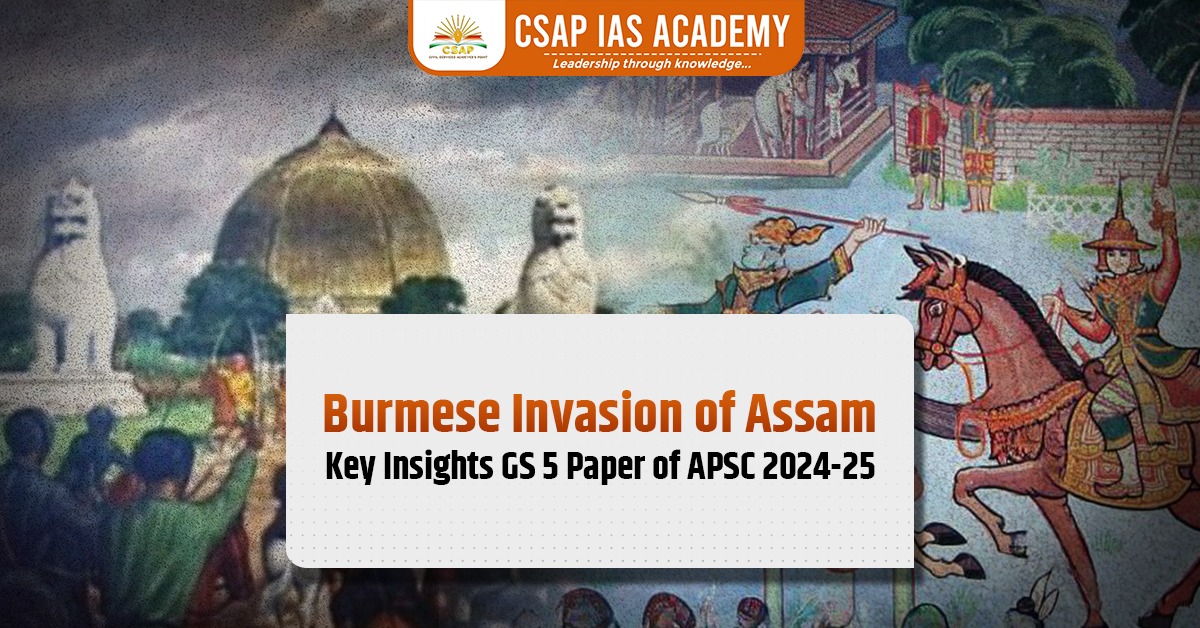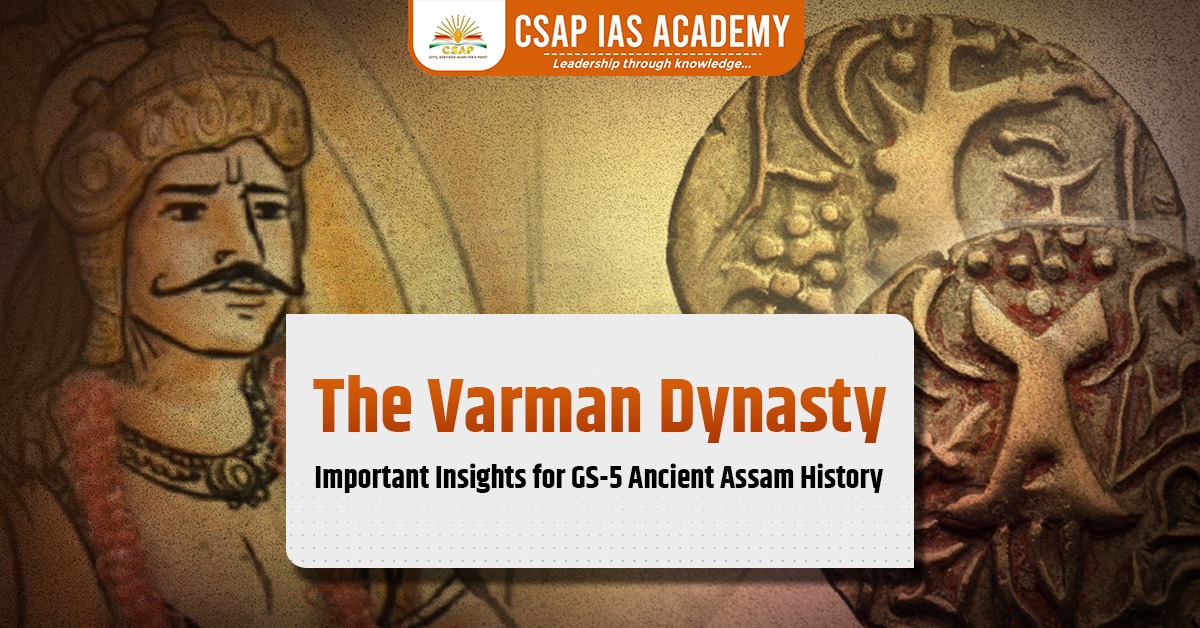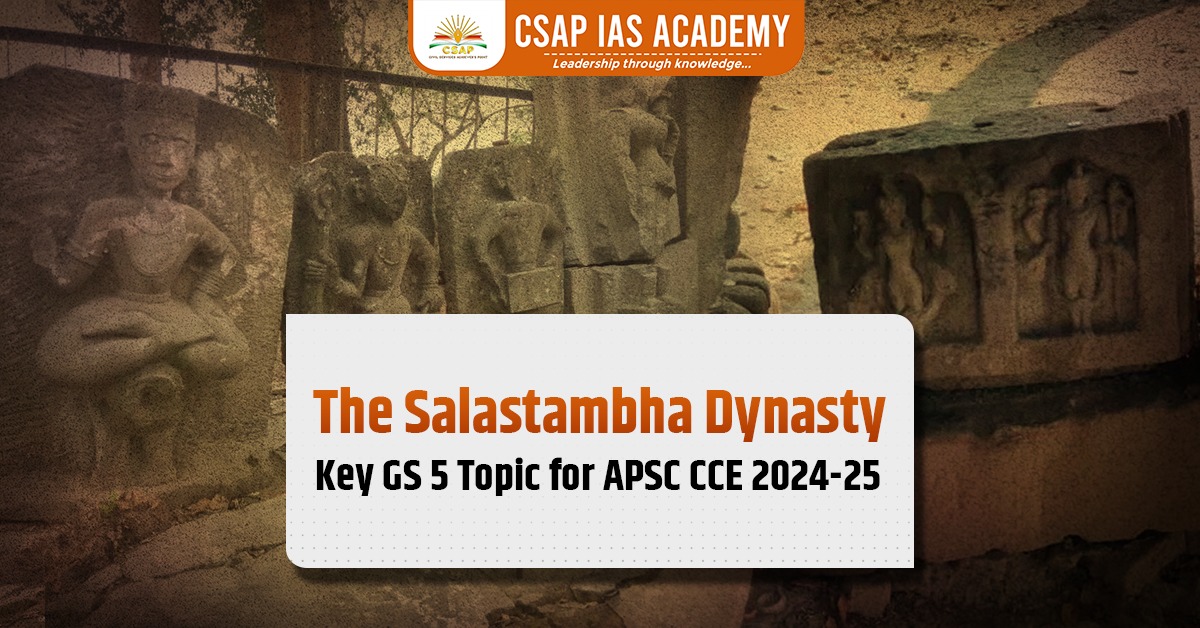There were three Burmese invasions of Assam between 1817 and 1826, during which time the Kingdom of Ahom came under the control of Burma from 1821 to 1825. Locally, this period, called the manor din by the Indigenous Assamese people and Chahi-Taret Khuntakpa (seven years of devastation) in Meitei, is remembered with horror.
The sharp drop in population due both to depredations as well emigrations left the erstwhile kingdom in shambles. The British, who were earlier reluctant to colonise Assam, came into direct contact with a belligerent Burmese occupying force.
First Burmese invasion
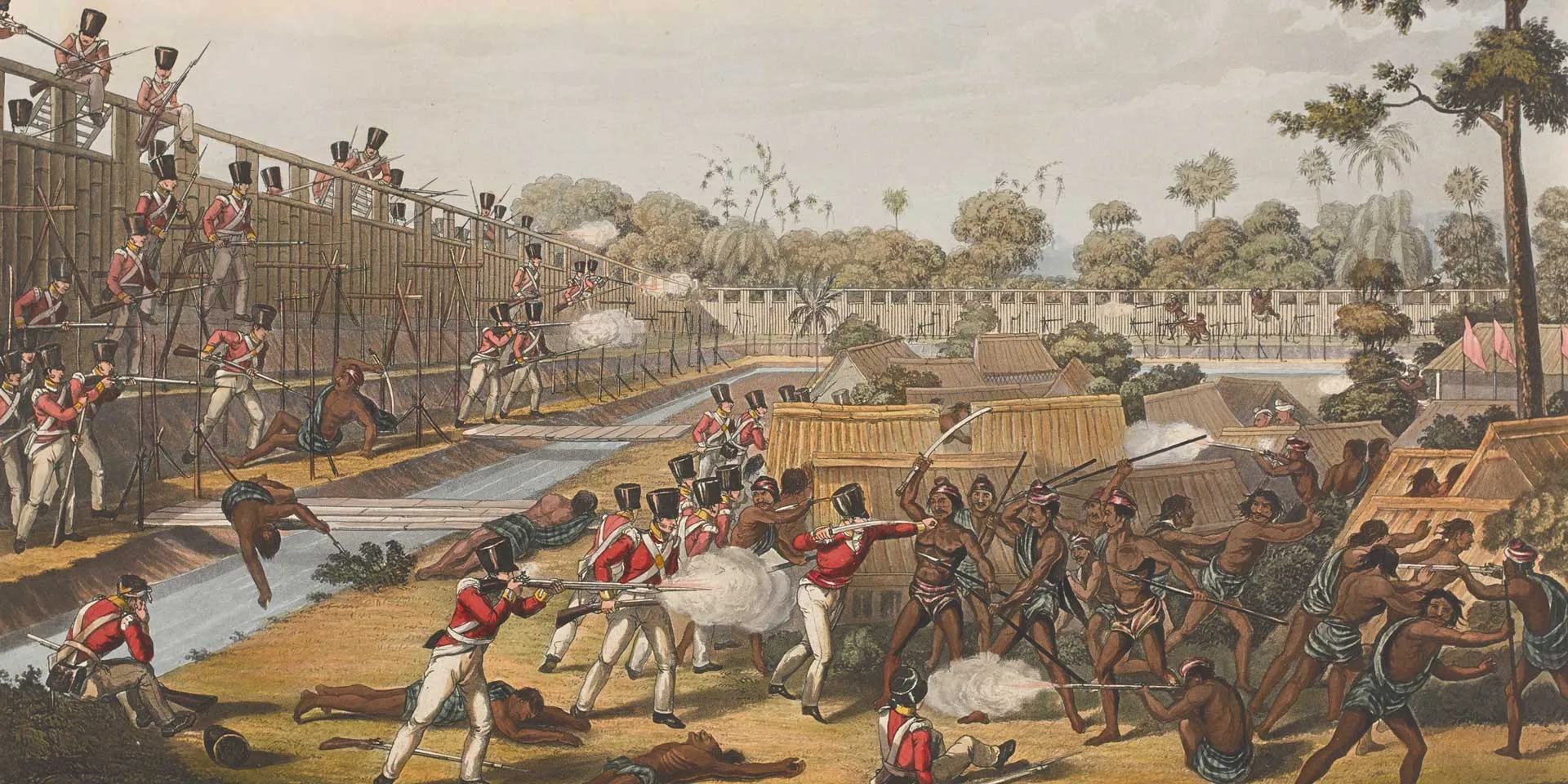
In 1816, Badan Chandra Borphukan. the governor of Guwahati came to the court of Burmese King Bodawpaya and sought help to defeat his political rival Purnananda Burhagohain. The Burmese monarch agreed and sent an expedition under a general of Bhamo, with Badan Chandra Borphukan which entered Assam in January 1817.
The first battle took place on March 27, 1817 at Ghiladhari. The Assam forces were led by Daman Gogoi, Hau Bora and Jama Khan. The battle continued for a week when Purnananda Burhagohain died due to natural causes.This, according to chronicles, led to the division in the ranks of the Ahom nobility, and due to lack of reinforcements the Assam army surrendered. Ruchinath, the son of Purnananda, became the Burhagohain, and asked the king to evacuate, who refused.
This led Ruchinath to suspect that Chandrakanta Singha was in alliance with Badan Chandra Borphukan, and left for Guwahati without the king when the Burmese army advanced toward the Ahom capital at Jorhat. The king, Chandrakanta Singha, stayed behind, received Badan Chandra Borphukan and made him the Mantri Phukan.
The Burmese army was paid 100,000 rupees and the commanders were given suitable presents. The Burmese army left Assam in April 1817. Soon after, Badan Chandra was assassinated. Ruchinath marched against Chandrakanta Singha and made Purandhar Singha the king.
Second Burmese invasion
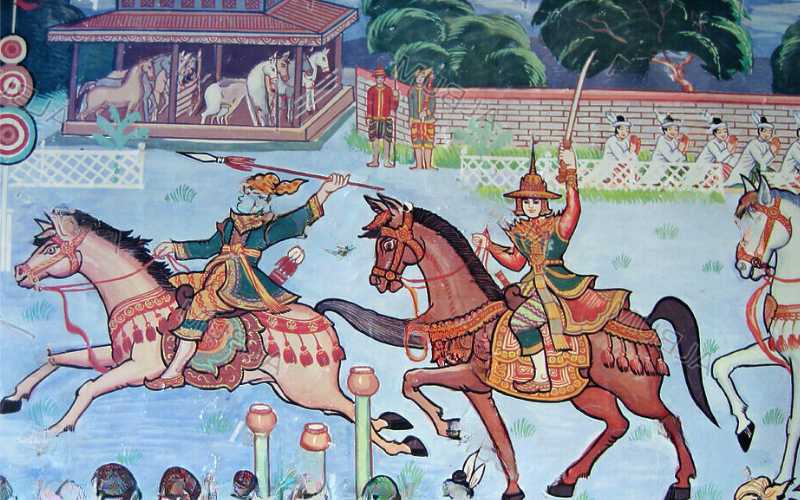
Bodawpaya, on hearing this news, sent an army of 30,000 under the command of Kiamingi (Ala Mingi Borgohain) and guided by Patalang Senapati (Momai Barua). This army was met by an army led by Jaganath Dhekial Phukan on February 15, 1819 at Phulpanisiga, near Janji. The Burmese army was defeated with a loss of about 300 soldiers and retreated a short distance. The Assam army, instead of pursuing the defeated Burmese, returned to the Ahom capital Jorhat leading to much confusion and panic.
Failing to instill confidence, Ruchinath Burhagohain and Purandar Singha sailed down to Guwahati, and the Burmese army was able to occupy the capital two days later. Chandrakanta was reinstated as the king on March 9, 1819 followed by execution of the Ahom officials who had supported Ruchinath Burhagohain; and in the middle of April 1819 Kiamingi left for Burma leaving Mingimaha Tilwa in charge.
Under Tilwa’s orders, Patalang pursued Ruchinath, engaged his forces in Nagaon and finally pushed him beyond Assam boundary. Patalang was made the Borbarua and the Burmese contingent returned to Burma on January 27, 1820. Nevertheless, Chandrakanta’s attitude toward the Burmese changed soon after. Patalang, who was originally a native of Namrup, persuaded the king to shake off Burmese allegiance and had a fort constructed at Jaypur (Dighalighat).
Third Burmese invasion
In 1819, Bagyidaw became the king of Burma and decided to annex Assam. He sent Mingimaha Tilwa to Assam in February 1821. Patalang Borbarua was killed and Chandrakanta Singha fled to Guwahati. Mingimaha killed a number of Ahom officials and installed Punyadhar (Jogeshwar Singha) as the king.
Chandrakanta Singha’s Response
Chandrakanta Singha made his camp at Guwahati and led his campaign against the Burmese without any help from Ruchinath or Purandar Singha. Purandar, who was unable to raise an army in the British territory, raised one in Bhutan under Robert Bruce, but this force was dispersed by Chandrakanta’s forces in May 1821.
A large force, deputed by Tilwa, advanced against Chandrakanta (September 1821), who retreated to Assam Chokey and then to the British territories. Unlike Purandar, Chandrakanta was able to raise a force mainly of Sikhs and Hindustani soldiers, and he retook Assam Chokey (October 1821) and Guwahati (December 1821) and pitched his camp at Mahgarh, near Jorhat, on March 15, 1822.
Bagyidaw, on hearing of the Assam situation, sent in a 20,000 strong contingent under Mingi Maha Bandula who attacked and defeated the forces of Chandrakanta in April 1822. Chandrakanta fell back to Guwahati, and finally to Assam Chokey, where he encountered Mingimaha Tilwa in June 1822. He was defeated and had to further retreat into the British territory.
After this victory, the Burmese declared Mingimaha Tilwa the Raja of Assam and brought an end to the sovereign Ahom rule in Assam.
Burmese rule
The defeat of Chandrakanta at Assam Chokey brought the Burmese face-to-face with the British in the Brahmaputra valley. Tilwa demanded the British hand over the fugitive king, and threatened to enter British territory to seize him, with about 7,000 troops at Assam Chokey and 1,000 more at Guwahati under Bandula.
Nevertheless, the Burmese troops faced logistics issues, and as a result Bandula left Guwahati, leaving Tilwa at Guwahati with only 1,000 troops. At this juncture, Chandrakanta Singha was invited by the Burmese to come back and rule.
Chandrakanta abandoned his Baruas and Phukan’s and surrendered to Tilwa at Assam Chokey. When he reached Jorhat, he was seized and imprisoned instead. This period is remembered in Assam as very difficult, with the garrison soldiers and native marauders committing atrocities on the common people leading to thousands leaving Assam for Bengal.
Much of the neighboring State of Manipur was also laid waste by the marauding armies. By 1825, the Meiteis under the leadership of Meitei king Gambhir Singh had repulsed the Burmese and drove them past the Chindwin River.
The occupation led to frequent contacts between the Burmese and the British and finally led to the Treaty of Yandaboo in 1826. This treaty marked the end of Burmese rule and the beginning of British rule in Assam.
Read: The Koch Kingdom
Download App:

